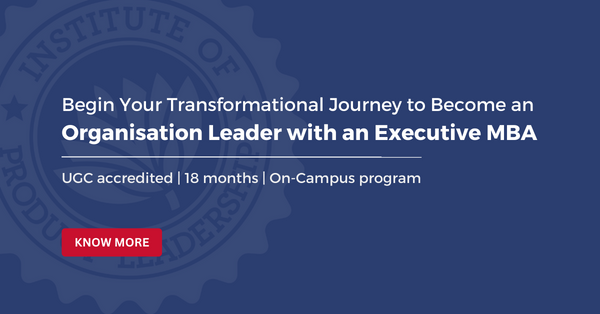Making Smarter Decisions as Product Managers
- product management
- 5 min read
By Arindam Mukherjee – Senior Director of Product, at Flipkart
As a product manager, making smart decisions is crucial for success. Decision-making is one of the most critical skills for a product manager, but it’s often overlooked and not taught in traditional education. In this blog, we will explore different frameworks and mental models that can help product managers make better and smarter decisions.
Key Takeaways:
- Traditional education often overlooks crucial decision-making skills. Embrace frameworks and mental models to approach problems in innovative ways.
- First principles thinking helps deconstruct complex problems, understand their core elements, and rebuild them with critical analysis. Use frameworks like “Who-What-How” to apply this effectively.
- Two Cross Two thinking offers a visual matrix to weigh the impact and effort of competing options. Use this framework to prioritise features, align stakeholders, and make strategic decisions, like with the reversible-consequential matrix.
- Second-order thinking encourages you to consider the long-term consequences and broader implications of your decisions. Tools like funnels and loops help visualise customer journeys and identify feedback loops for continuous improvement.
- Probabilistic thinking equips you to estimate the likelihood and impact of different outcomes using data and intuition. Leverage frameworks like the RICE scorecard to prioritise features based on reach, impact, confidence, and development effort, promoting objective decision-making and stakeholder alignment.
Five mental models that can improve decision-making for product managers
First Principles Thinking
First principles thinking is a mental model that involves breaking down complex problems into their basic elements and rebuilding them from scratch. It requires questioning assumptions, finding evidence, considering alternate perspectives, examining consequences, and creating a feedback loop. This approach helps product managers think critically and make decisions based on fundamental truths. The Who-What-How framework can be used to apply first principles thinking in product management.
Two Cross Two Thinking (2X2)
Two Cross Two thinking is a framework that helps product managers make trade-off decisions. It involves mapping competing forces on a two-dimensional matrix to visualise the impact and effort required for different options. This framework can be used to prioritise features, align stakeholders, and make strategic decisions. The reversible-consequential matrix is a specific application of two Cross Two thinking that helps product managers assess the impact and reversibility of actions.
Second Order Thinking
Second-order thinking involves considering the long-term consequences of decisions. Product managers need to go beyond immediate outcomes and think about the broader implications of their actions. Funnels and loops are frameworks that can help product managers track the results of their decisions. Funnels track customer journeys from acquisition to conversion, while loops focus on feedback loops and continuous improvement.
Probabilistic Thinking
Probabilistic thinking involves using logic and data to estimate the likelihood and impact of different outcomes. Product managers need to balance data and intuition when making decisions. The RICE scorecard is a framework that can help product managers prioritise features based on their reach, impact, confidence, and effort to develop. This framework allows for objective decision-making and helps align stakeholders.
Inversion Thinking
Inversion thinking is a mental model that involves thinking backwards to uncover potential roadblocks and errors. It helps product managers identify and address potential problems before they occur. This approach requires defining the problem, inverting it to identify failure points, and fixing those failure points to achieve success. Inversion thinking helps product managers anticipate and mitigate risks.
Summary
By applying these frameworks and mental models, product managers can make better and smarter decisions. First principles thinking, two Cross Two thinking, second order thinking, probabilistic thinking, and inversion thinking provide frameworks for critical thinking and decision-making. These tools, combined with a curious and empathetic mindset, can help product managers navigate complex challenges and drive success in their roles.
About the Author:
Arindam Mukherjee – Senior Director of Product, at Flipkart
Frequently Asked Questions
Transitioning to product leadership involves gaining experience in product management, honing leadership skills, and showcasing a track record of successful product outcomes. Start by excelling in product management roles, taking on leadership responsibilities, and seeking mentorship from established product leaders.
To transition to a product management role, focus on acquiring relevant skills such as market research, user experience design, and strategic thinking. Tailor your resume to highlight transferable skills and consider obtaining certifications in product management. Networking with professionals in the field and seeking informational interviews can also open doors to opportunities.
Moving into product leadership involves demonstrating a deep understanding of product management, showcasing leadership qualities, and taking on roles with increasing responsibilities. Seek out leadership opportunities within your current organization, mentor junior team members, and stay updated on industry trends to position yourself as a valuable asset for leadership roles.
Yes, product management is inherently a leadership role. Product managers are responsible for guiding the development and success of a product, which involves making strategic decisions, collaborating with cross-functional teams, and aligning efforts towards a common vision. Effective product managers exhibit strong leadership skills to drive innovation and achieve business objectives.






